Balsam is a familiar plant from childhood, a bright plant, characterized by abundant and almost continuous flowering. Indoor balsam is represented by hundreds of varieties, the cultivation of which and caring for them in traditional home conditions does not require much effort, even for a beginner grower. It is enough to follow a few simple rules for care and the flower will delight with lush flowering throughout the entire vegetative period. In connection with its prevalence, balsam has several popular names that correspond to its features - wet rodent, light, touchy.
Content
Description of the types and varieties of indoor balsam with names
The genus Balzamin includes about 5 hundred different species and varieties. Their beauty and variety can be estimated from the photo. The most common are:
- Waller's balsam is a species with thick, juicy and spreading stems, green or brownish broadly oval leaves (4-6 cm long) with a pointed apex and rather large flowers of various colors. This species is very popular, it has become the basis for the breeding of other forms that are combined into varietal series.
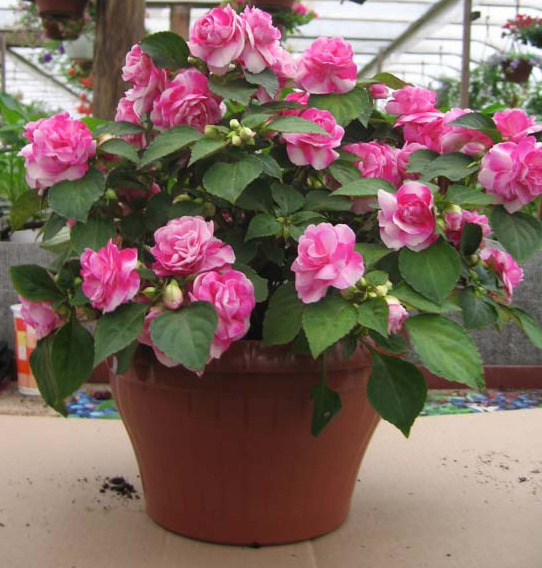
Balsam waller - Varieties of the Fiesta group have very decorative terry flowers. They are quite compact (15-30 cm). In the photo - a variety of Fiesta Sparkler Cherry.
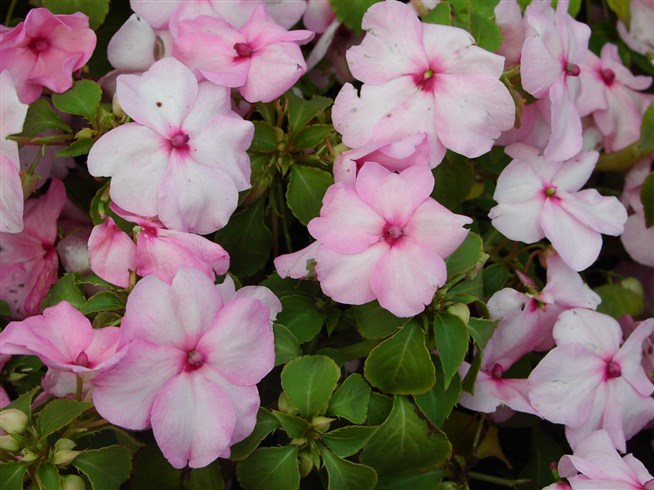
Fiesta sparkler cherry - Kandy balsam is small, but very branched and blooming profusely.
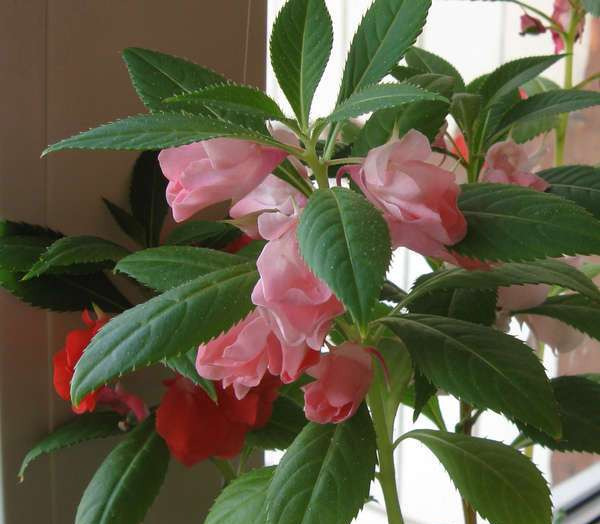
Kandy - Dwarf balsam Tom Tamb is distinguished by large (about 7 cm) terry flowers of a cameliform shape.
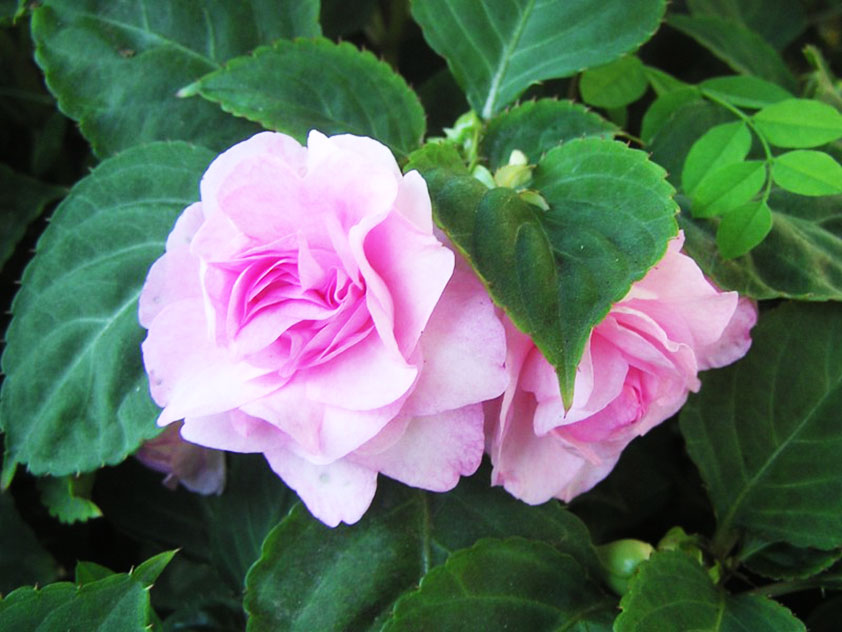
Tom Tamb - Sultanate or indoor balsam has green leaves and shoots. His double flowers are like roses.
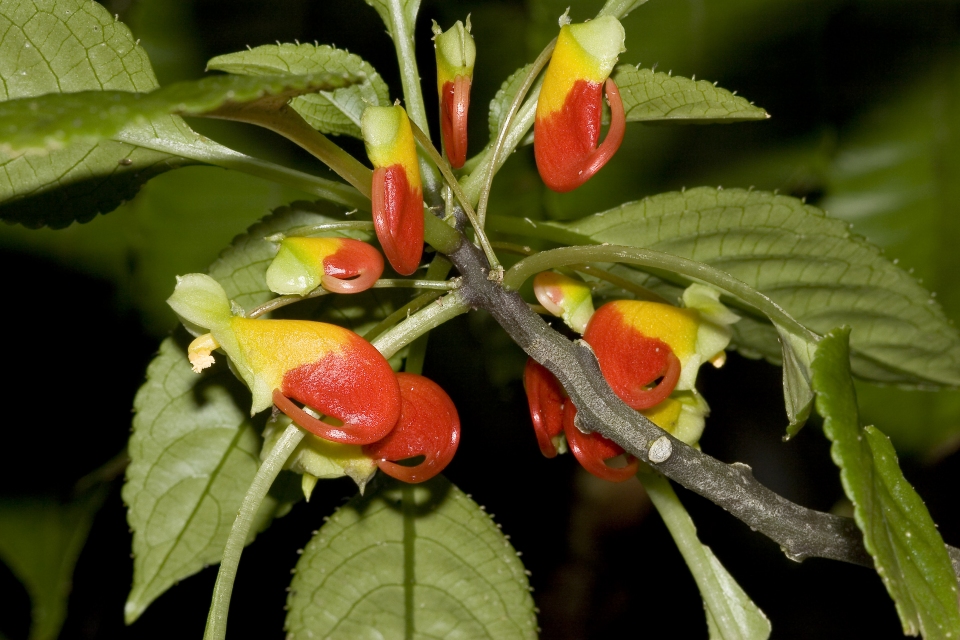
Salt-like balsam - Niamese balsam has original colors that look like the beak of an exotic bird. They bloom densely on straight dense shoots, decorating the background from long green leaves. Love for heat does not allow to grow this balsam outdoors.
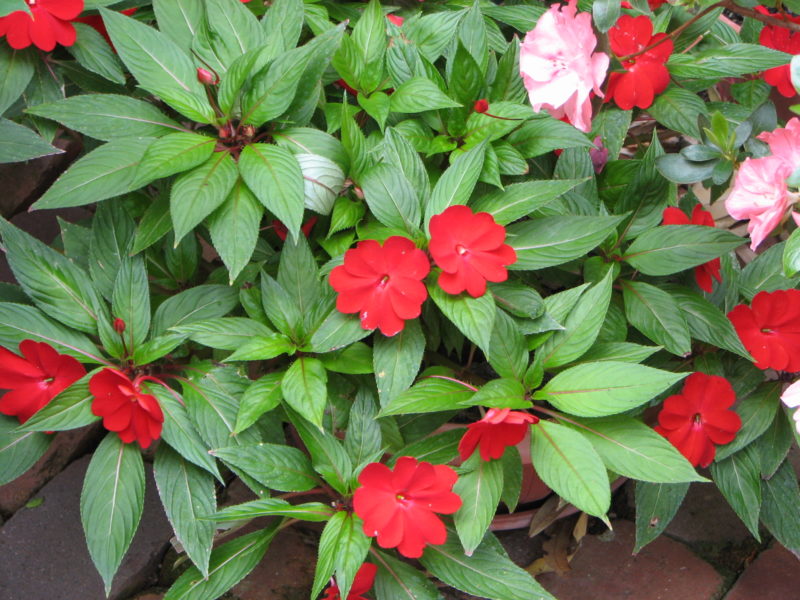
Balsam Niamese - New Guinean hybrids are characterized by colorful leaves of green and even bronze color, sometimes with a yellow middle. These perennials bloom profusely and almost all year round, the flowers are large. The most famous representative is Hocker's balsam with large flowers and elongated dark green leaves.
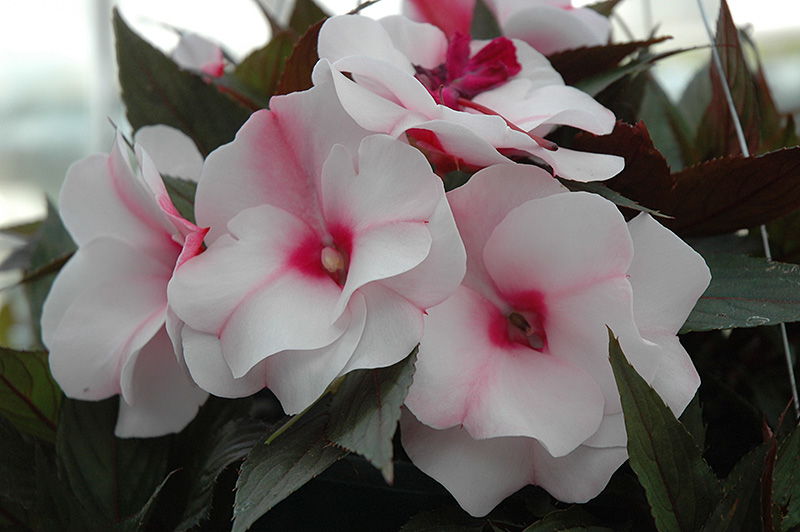
Balsam Hawker
The flowers of the varietal New Guinea Paradise series are very variegated, and the foliage is dark green.
The specifics of balsam care at home
Basically, care comes down to timely watering, but other plant needs need to be considered.
Lighting
Balsam needs good light, but only indirect sunlight. Because of them, burns will appear on the foliage.
Temperature and humidity
In the warmer months, it is recommended that the temperature be kept at 25 ° C or more if the soil is moist and there is fresh air.It is advisable to carry out regular spraying, preventing water from entering buds and flowers. With the effect of the greenhouse (high temperature and humidity) leaves may fall. In the cold season, temperatures below 10 ° C must not be allowed.
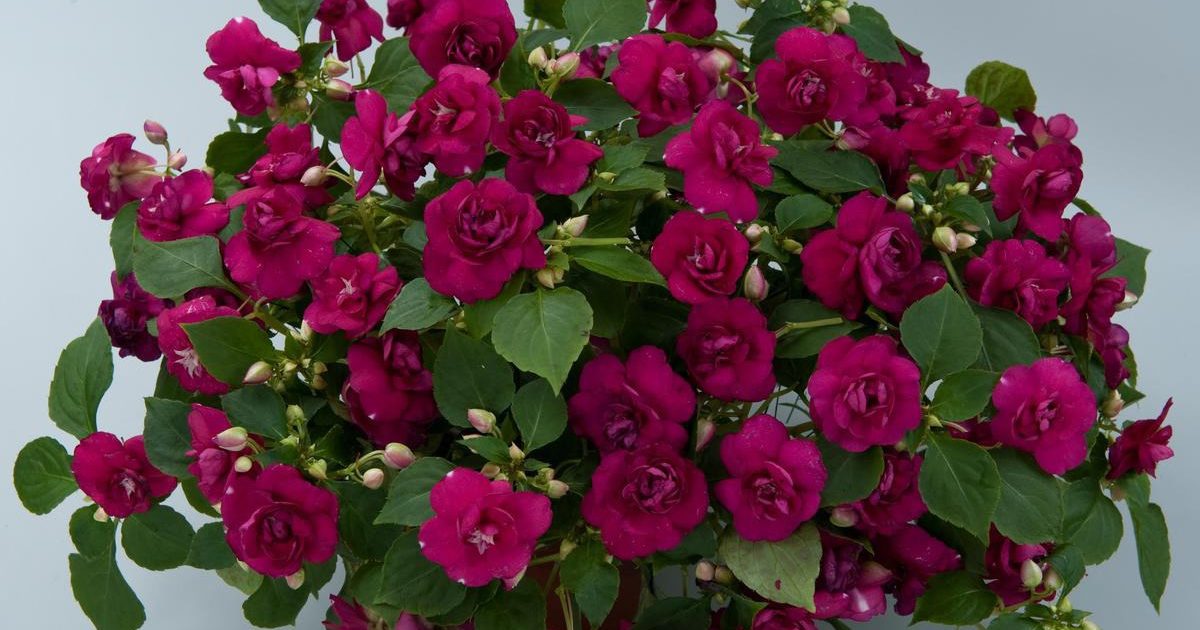 You may be interested in:
You may be interested in:Watering and feeding
This plant is popularly called Vanka wet because of water love. Water often and abundantly with soft, settled water. Hard water causes alkalization of the soil. When white plaque forms, the topsoil must be replaced.
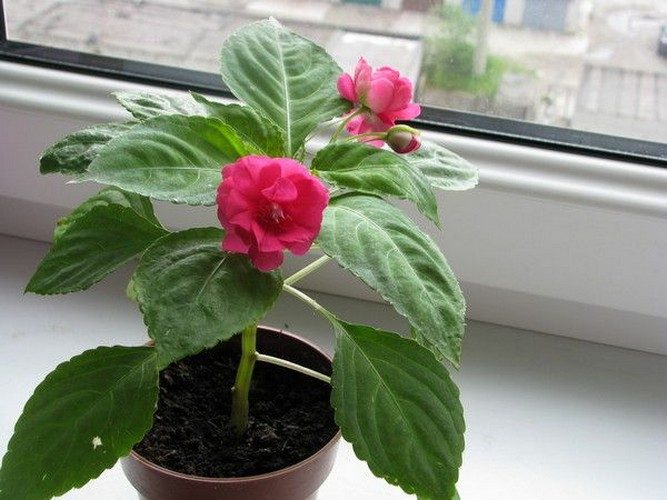
In summer, you can water every other day, in winter - 1 time per week. The substrate should not be wet, but slightly moist. Excess moisture should be avoided, this will attract small midges - sciarid. Watering should be carried out along the edge of the pot, without getting on the root neck.
So that the roots breathe, the soil must be regularly loosened to a depth of 1 cm.
In the spring and summer, you need to make complex fertilizers for decorative flowering plants in half the dose. Frequency - 1 time in 2 weeks. This should be done after watering.
Planting and flower propagation options at home
At home, not only planting and transplanting is easy, but also the reproduction of balsam. For this purpose, two main methods are used.
Cutting is a popular method due to its simplicity and effectiveness. Cuttings are usually harvested in late August or September. Need apical cuttings of 5-7 cm length with a pair or more internodes. After removing the lower leaves, they should be placed in a container with clean water or wet sand. Roots will break through in a week. After a couple of weeks, the young balsam is ready for the transplant process.
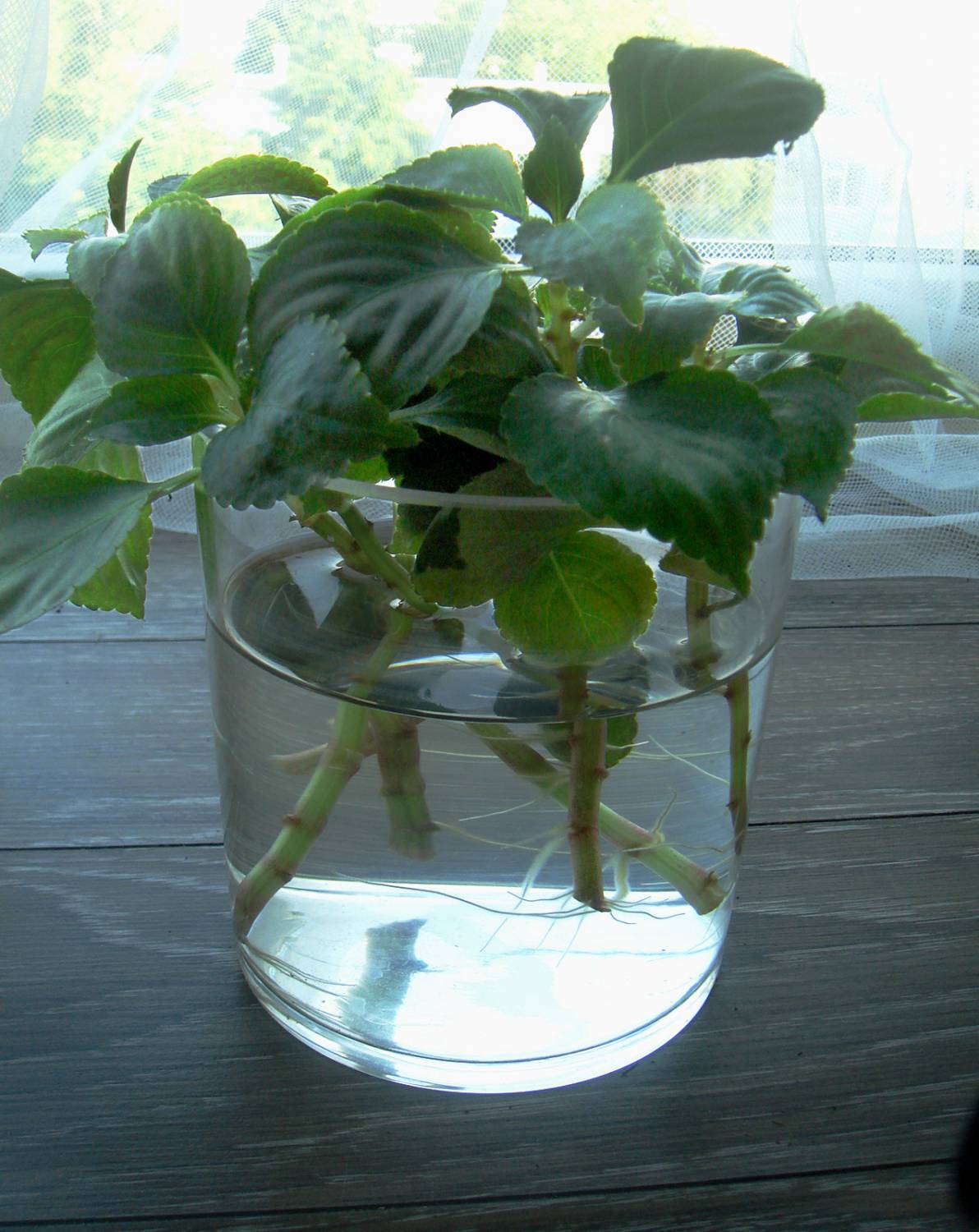
The seeds. The timing of sowing balsam at home does not play a special role. However, if you need to decorate the balcony with flowers in the summer, then sowing should take place in February. It is necessary to disinfect the seeds in a light solution of potassium permanganate for 10 minutes, then drain the solution and soak for 24 hours in clean and warm water. For seedlings you will need a wide container with a height of 7-8 cm with a drainage of at least 2 cm.
It must be filled with a prepared substrate (store-bought or a mixture of garden soil, peat, vermiculite and coarse sand). Fitosporin solution will help improve soil microflora and reduce the risk of developing diseases. Next, you should sparsely distribute the seeds on the surface of the soil, easily pressing each to the soil with a toothpick.
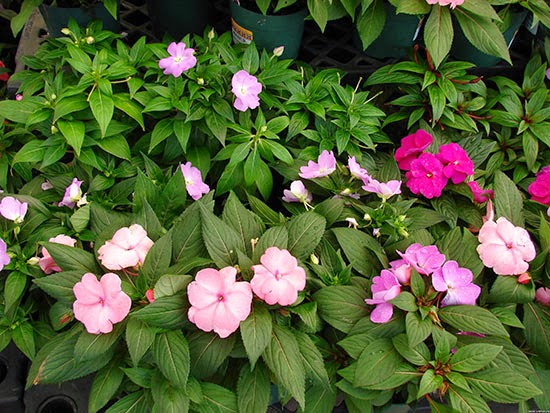 You may be interested in:
You may be interested in:After that, it is good to spray the soil and not very tightly cover with a plastic bag. The container should be located on a well-lit window sill at a temperature of 22-25 ° C, but not in direct sunlight. After 3-4 weeks, single shoots appear. From this time on, you need to open the greenhouse every day, get rid of condensate and ventilate the seedlings so that, due to excess moisture, they do not become infected with the fungus.
After another week, you can completely remove the polyethylene and moisten the soil with a spray gun. In the morning, in the evening and on cloudy days, young sprouts need additional illumination. So that the root necks do not decay, it is better to water through a tray, but not to allow water to stagnate there. When the sprouts reach a height of 1.5-2 cm, they must be dived, and when full leaves appear, distribute them to personal pots.
Transfer
It is recommended to carry out transplantation from the third decade of February to the third decade of March. The procedure in room conditions is best done as follows:
- in advance (for 1 day), pour plenty of balsam;
- fill the flower capacity, selected by the volume of the root system and 1-1.5 cm larger than the previous one, на drainage (expanded clay, brick chips, etc.);
- pour ½ with a mixture of humus, sod land, peat, sand and some charcoal (it is important that the substrate is water and breathable, preferably of weak acidity);
- pour settled warm water;

Transfer - remove the topsoil and carefully remove the pet from the previous container with a lump of earth, if there are damaged roots, remove them;
- place the plant in the center of the new dishes, fill with a new soil mixture of emptiness and slightly compact;
- water moderately and place in the shade for a while.
Balsam Flower Diseases and Treatment Methods
Balsam very often attracts pests to its body, as specific sweetish droplets appear on it. Among the main enemies are a spider mite, whitefly, aphid and root mealybug:
- It is difficult to get rid of a spider mite. It is almost invisible, hiding not only on the back of the leaf, but also on all objects surrounding the flower. When a spider web appeared on the plant, its population was already large.
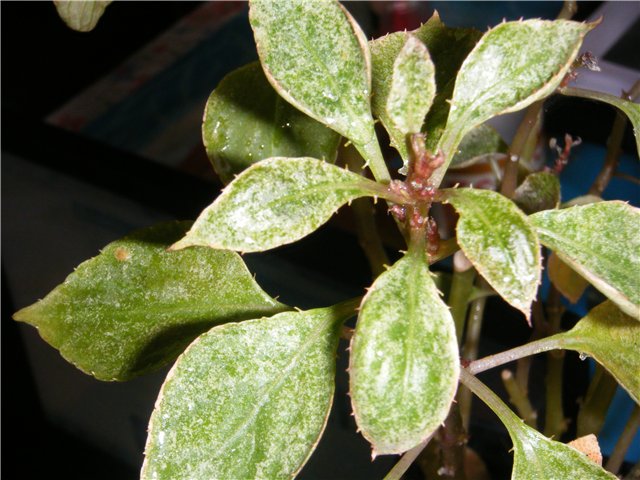
Spider mite It is necessary to isolate the specimens affected by it, to proliferate everything around and treat it with Appolo, Kiron, Sunmayt, Ortus, Fufanon, Actellik, Fitoverm, Bikol, Flumayt with an interval of 4-5 days. The pest quickly gets used to chemicals, so it is advisable to change them. To enhance the effect, it is recommended for some time to cover the plant with polyethylene.
- Against aphids, it is better to first use natural remedies - infusions of wormwood, onion husks, dandelion, tobacco and marigolds, as well as a soap-ash solution and a solution of potassium soap. If radical measures are needed, then the drugs Actellik, Fas, Decis, Fitoverm, Karate should help.
- It is not possible to immediately detect the root worm. Over time, he will leave a white cotton coating on the walls of the flower container - these are his nests. He loves dry soil. It is necessary to remove damaged and shrunken roots, treat with insecticides, soak in tobacco infusion. The soil must be replaced, and the pot must be thoroughly cleaned.
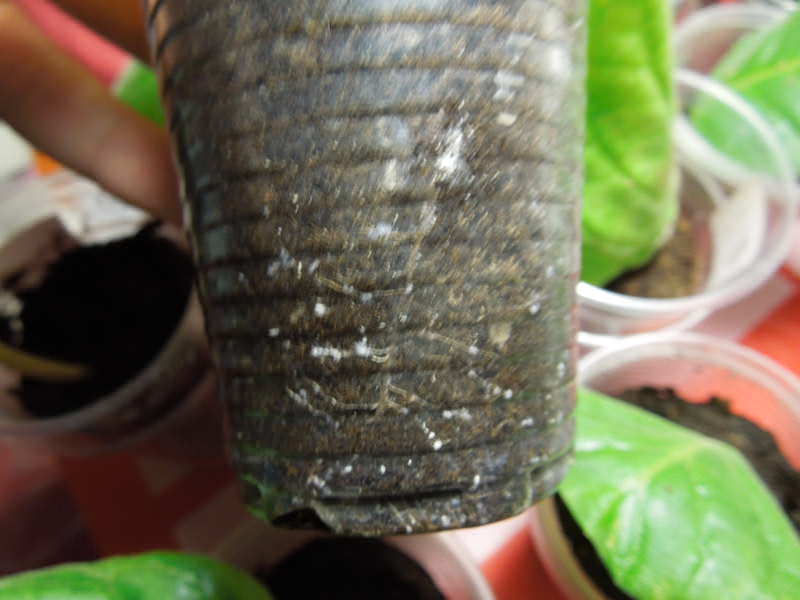
Rootworm Damage - To cope with the whitefly, you must first deprive it of favorable conditions by placing the plant in a cooler place. In addition, hang nearby adhesive tapes, regularly wash eggs and larvae off the leaves with soap and water, collect insects in the morning with a vacuum cleaner and spray the plant with infused crushed garlic. Of the chemicals, you can use Actellik, Intavir, Decis, Fufanon, Aktara and apply them strictly in accordance with the instructions.
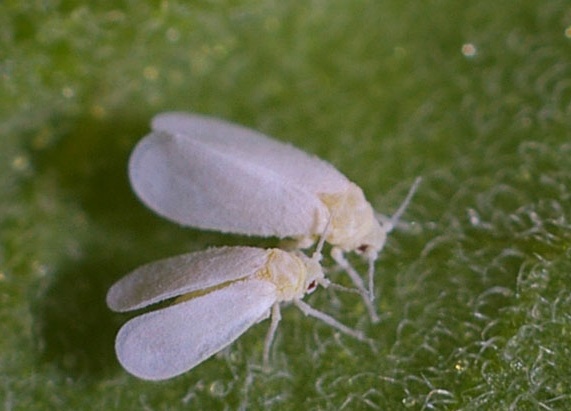
Whitefly
The main plant diseases and treatment methods:
- With a mosaic disease, the leaves become covered with yellow spots, but do not fall. The stalk deforms and fades. It is useless to save the plant. It is necessary to deal with its distributors - ticks or thrips. And to prevent this from happening - to improve care and apply measures when pests appear.
- Brown spots first on the foliage, and then on the stems indicate gray rot. In the next stage, a gray coating forms from the spores of the fungi, which destroys the plant. The spread of the disease is due to bacteria. Diseases contribute to hypothermia and freezing of balsam, drafts, dusty air, cold water for irrigation and low room temperature. The affected parts of the plant must be disposed of, and the balsam should be transplanted into fresh soil and sprinkled with Fundazole.
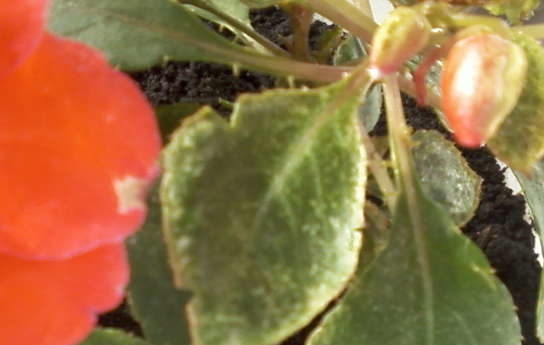
Flower disease - The appearance of watery spots on the stems and leaves should immediately respond. It may be bacteriosis.It develops well with excess moisture and fertilizers in the soil, high temperature and unclean air. And it is better, in order to avoid infection of other plants, to destroy the injured instance altogether.Remember!When the spots turn brown and spread over the entire surface, the flower will die. It is urgently necessary to isolate it, remove everything suspicious and sprinkle balsam with Bordeaux liquid, copper-containing preparations.
- At temperatures below 16–18 ° C, high humidity and the absence of fresh air, a whitish coating forms on the back of the leaves. Then the leaves turn black and fall, and the new foliage becomes small or does not grow at all. These are signs of powdery mildew. Balsamins obviously affected by the disease must be destroyed, and specimens without obvious problems should be treated with a solution of soda ash (2 g soda per 1 liter of water) or a copper-soap solution.
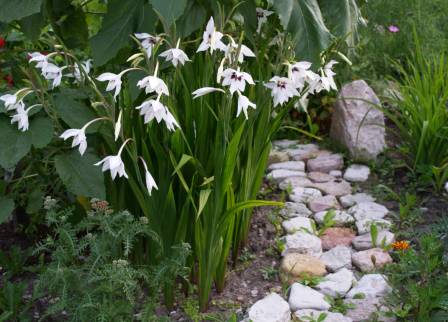 You may be interested in:
You may be interested in:Common Growing Questions
The main "whim" in the rest of a fairly unpretentious representative of the flora is the intensive consumption of water. You should not forget about fertilizers, temperature and lighting. As a result, it will be possible to get beautiful flowers, each variety will surprise with its shape and color, and flowering will be long and magnificent. In addition, the plant can be successfully propagated by cuttings or seed method.




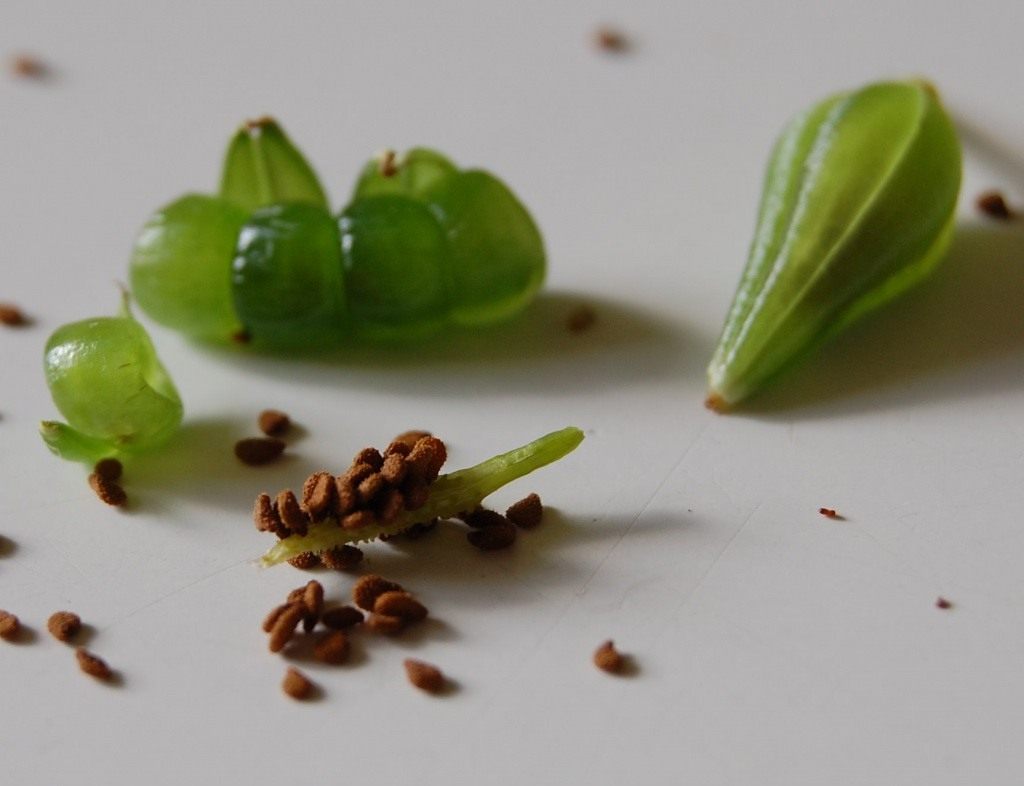
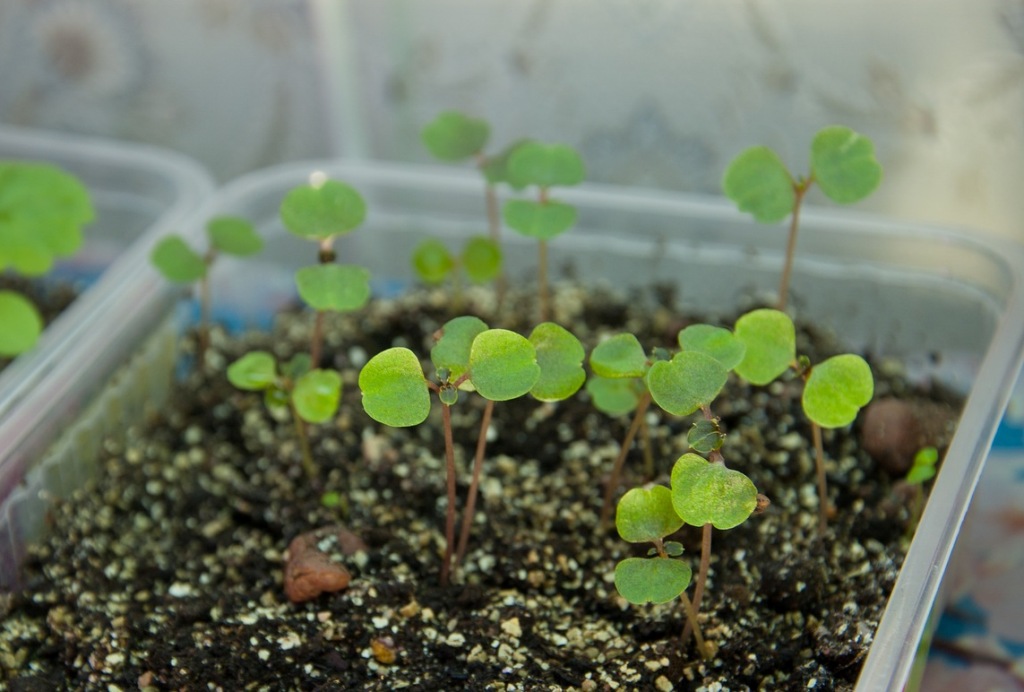
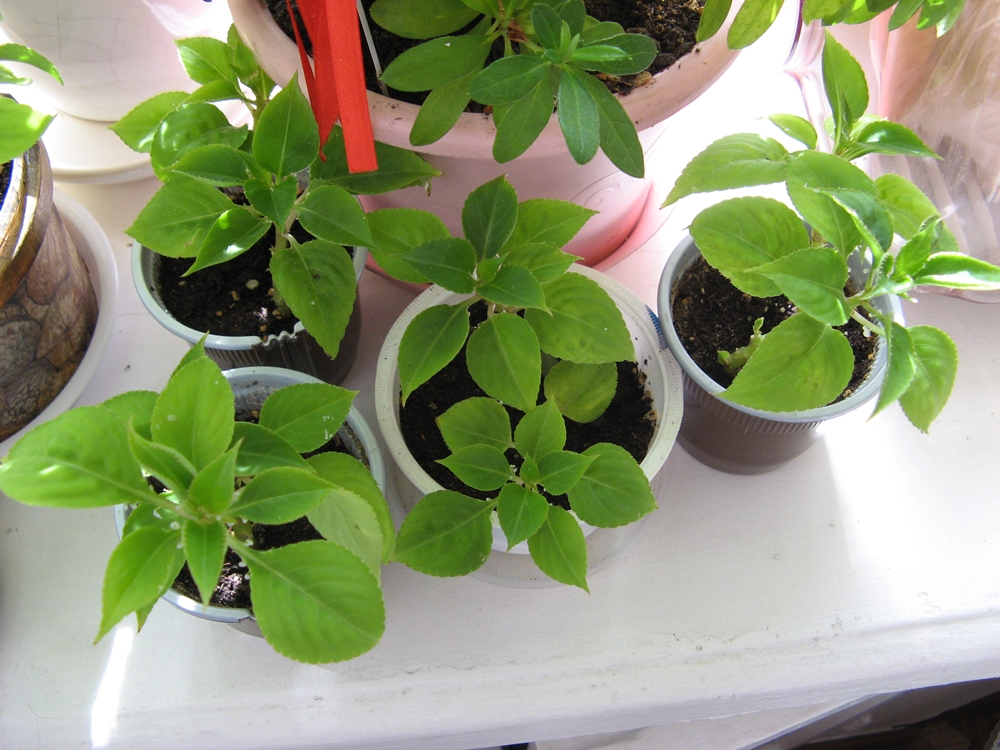
 Sow in the ground, without seedlings: 10 beautiful and unpretentious flowers
Sow in the ground, without seedlings: 10 beautiful and unpretentious flowers Platicodon planting and outdoor care
Platicodon planting and outdoor care Hosta - planting and care in the open ground in the Urals
Hosta - planting and care in the open ground in the Urals Oleander - care and growing at home
Oleander - care and growing at home